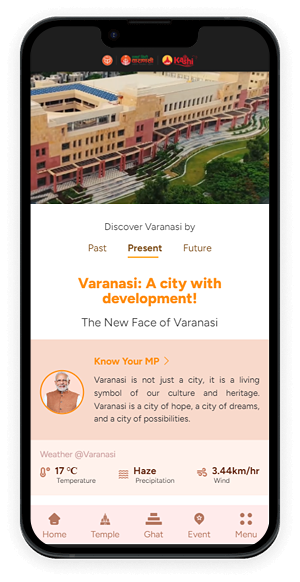बूंदीपरकोटा घाट के बारे में
Bundiparkota Ghat sits quietly along the Ganga, its name evoking echoes of a time when kings built, and then bowed. “Parkota” means fortified wall, and this ghat once belonged to the rulers of Bundi, a princely state in Rajasthan. It was their retreat — a riverside refuge far from desert courts, but rich with sacredness.
Originally known as the Adi Vishweshwar ghat, it was stone-paved in the late 16th century by the King of Bundi, Maharaja Rao Surjan. It holds historical significance as Chaitanya Mahaprabhu is reported to have stayed here at Chaitanya Vat during his visit to Banaras in February 1516.
The remains of the Rajput-style architecture still linger here — carved balconies, faded frescoes, and layered pavilions. But time, as always in Varanasi, has softened the edges. What was once regal is now reverent. Locals use the ghat like any other — for bathing, for prayer, for everyday moments of stillness. This ghat reminds us that in Kashi, even kings come to kneel, and even palaces return to the river.







